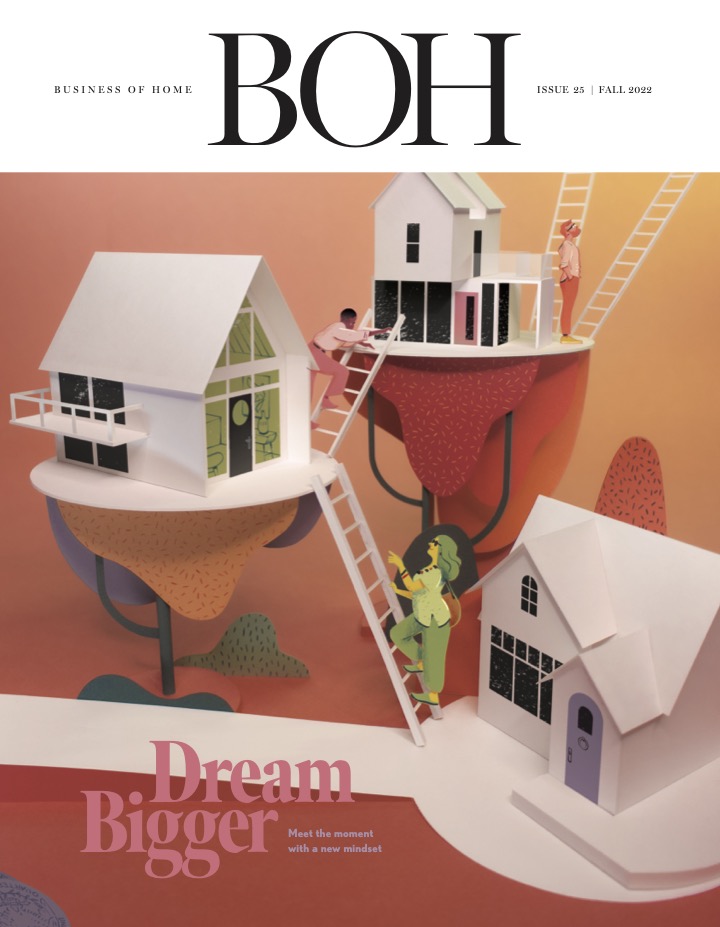Dear Sean,
I recently came across your column about how to get clients to stop texting. In it, you wrote that “every creative business … only has eight stages and four transitions.” It made me curious about that process tree and what it should look like. My clients are telling me that they are “feeling lost in their process,” which tells me that there is something I’m doing—or rather, not doing—that is making things complicated. How do I rethink the way I structure the process for my clients, and is there a way to reroute mid-project for the people I’m already working with?
Looking for a Road Map
Dear Looking,
Somebody has to have the compass and know how to read it. That somebody is you. I believe that proper orientation starts with the acknowledgment that every interior design business is actually three businesses: design, production and installation. If there is a retail component to what you do, that would be a fourth business. Within the firm’s operations, each business needs to be delineated so that it can stand on its own, both in terms of profitability and process. So the answer to your question is that you need to create clarity as to which business your clients (both new and existing) are dealing with—and when, and why.
On July 9, strategist Ericka Saurit, in part two of her Social Storytelling series, dives deeper into the visual side of self-promotion, dissecting how your Instagram feed, stories and content work together to deliver a cohesive, scroll-stopping message about your unique design brand. Click here to learn more and remember, workshops are free for BOH Insiders
We want to hear your thoughts! Take BOH’s annual reader survey, an 8-minute questionnaire that helps us get to know you better and will allow us to tailor our storytelling to your business needs.
Let’s start with the design work itself. What is your creative process like and what will indicate success?
To get you thinking about it, consider this trick question: Who is the better designer—the one who starts with window treatments and paint color, then moves to recessed lighting, flooring, floor coverings and finally makes a furniture plan, or the designer who does it exactly the opposite way? Answer: It depends on the client. An outside-in client with an inside-out designer is a disaster, just as much as it’s a winner if there is alignment.
It is impossible for any client to appreciate the kind of designer you are unless you tell them up front and often. If you’re having trouble defining it, try this: Write a letter to a long-lost friend (you don’t have to send it) that explains how you love to create for clients—how you go from the kernel of an idea to a fully formed design. It can be a paragraph or 10 pages—it is yours, and you have to own it as such. Reading it back, ask yourself what part is “mission critical” and what is a nice confirmation that you are on the right track. Perhaps the floor plan is mission critical, but the color scheme is confirming but not definitive. That is for you to decide. What is mission critical has to be paid for—either with money or an irreversible decision (like issued construction drawings). Everything that is confirming is nice but not ultimately necessary to keep going.
With that letter in hand and notions of what needs to be decided—and when—you will now have your compass. The next step? Use it at every moment while you are designing (and charging for your work).
Production is different. Many skilled professionals would be able to execute your design if it’s communicated well. Yes, there is artistry involved, but it is derivative to the already decided scheme. As such, the band is narrow and interpretation limited. While design is wholly irrational (by that, I mean that you have to do it your way and someone else could do it exactly the opposite way), production is entirely rational—the path to manifestation is not a surprise, no matter the challenges. Different businesses, different metrics and different expectations.
Installation can either be an outgrowth of production or a creative enterprise all on its own. If it is the former, I might suggest not charging for it. If it is the latter, something more akin to improv, then a healthy creative fee might be in order.
The entire point is that it is your responsibility to earn permission to take the next step. Too often, the expectation is that things will just come together and that clients are effectively your partners in their design. Nothing—truly nothing—could be further from the truth. Your compass, your path and your willingness to lead is always what will define your success—or limit it.
Homepage image: ©Haslam Photography/AdobeStock
____________
Sean Low is the go-to business coach for interior designers. His clients have included Nate Berkus, Sawyer Berson, Vicente Wolf, Barry Dixon, Kevin Isbell and McGrath II. Low earned his law degree from the University of Pennsylvania, and as founder-president of The Business of Being Creative, he has long consulted for design businesses. In his Business Advice column for BOH, he answers designers’ most pressing questions. Have a dilemma? Send us an email—and don’t worry, we can keep your details anonymous.




























